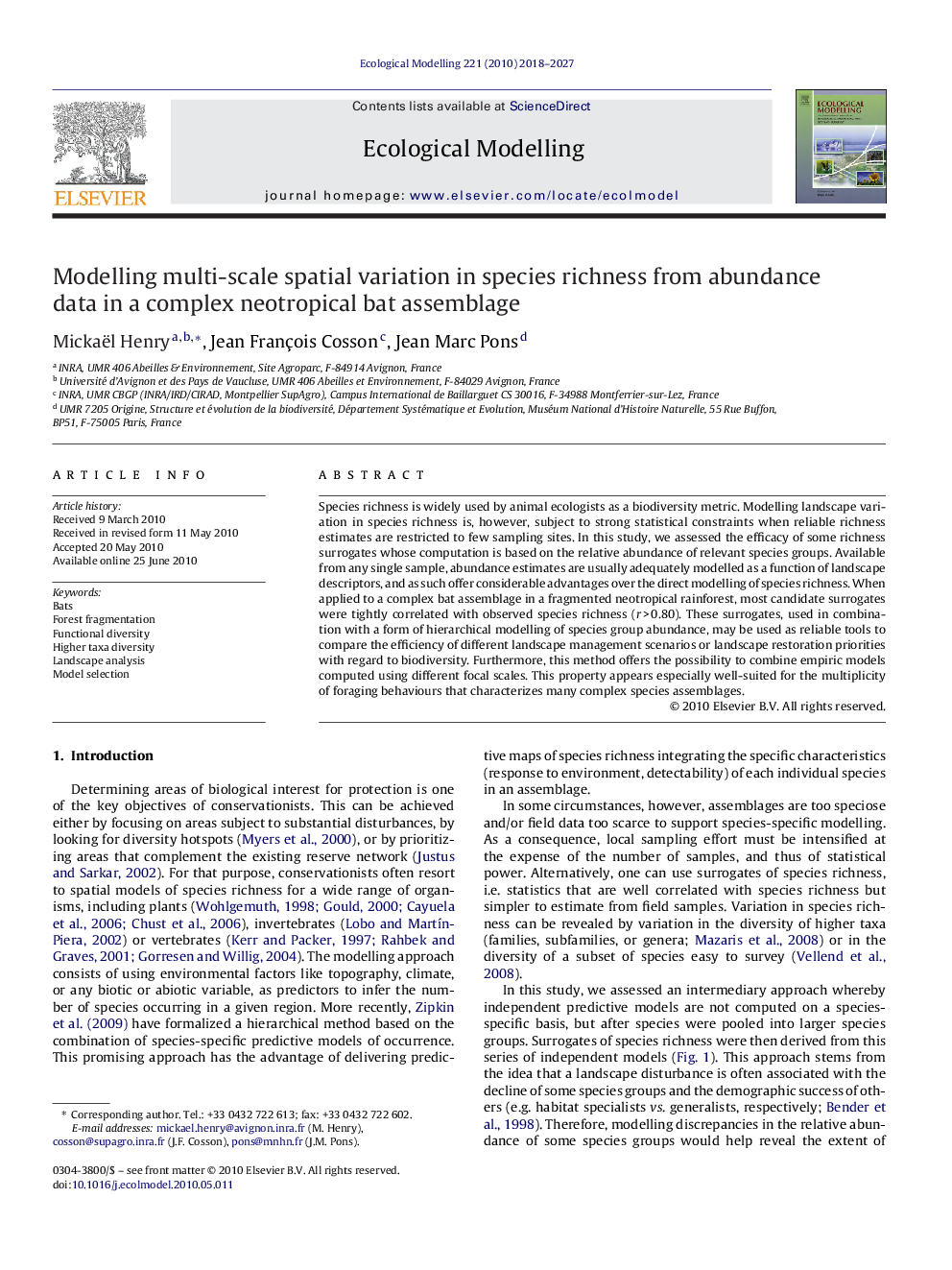| Article ID | Journal | Published Year | Pages | File Type |
|---|---|---|---|---|
| 4377306 | Ecological Modelling | 2010 | 10 Pages |
Species richness is widely used by animal ecologists as a biodiversity metric. Modelling landscape variation in species richness is, however, subject to strong statistical constraints when reliable richness estimates are restricted to few sampling sites. In this study, we assessed the efficacy of some richness surrogates whose computation is based on the relative abundance of relevant species groups. Available from any single sample, abundance estimates are usually adequately modelled as a function of landscape descriptors, and as such offer considerable advantages over the direct modelling of species richness. When applied to a complex bat assemblage in a fragmented neotropical rainforest, most candidate surrogates were tightly correlated with observed species richness (r > 0.80). These surrogates, used in combination with a form of hierarchical modelling of species group abundance, may be used as reliable tools to compare the efficiency of different landscape management scenarios or landscape restoration priorities with regard to biodiversity. Furthermore, this method offers the possibility to combine empiric models computed using different focal scales. This property appears especially well-suited for the multiplicity of foraging behaviours that characterizes many complex species assemblages.
